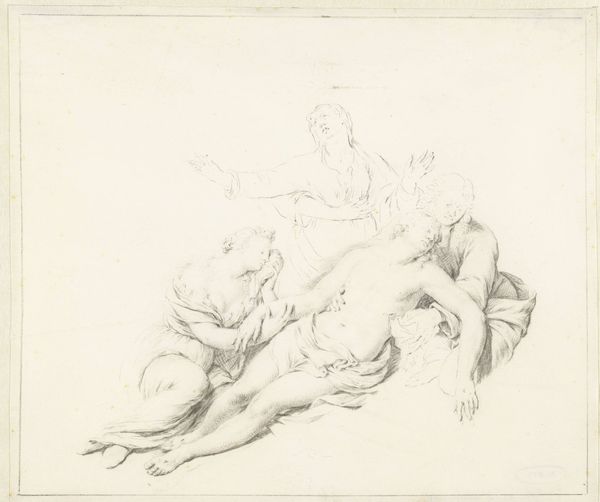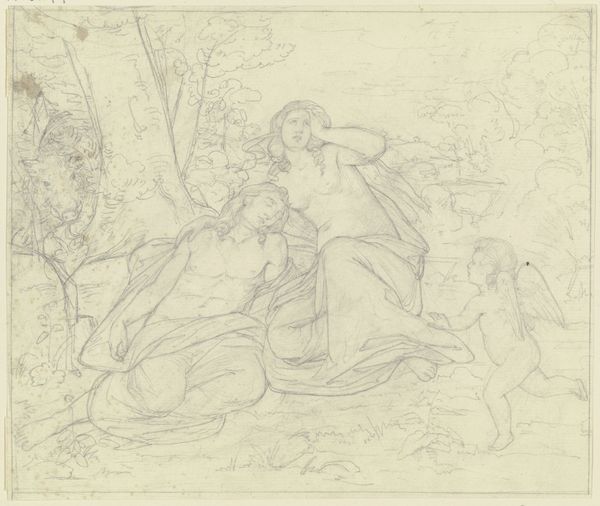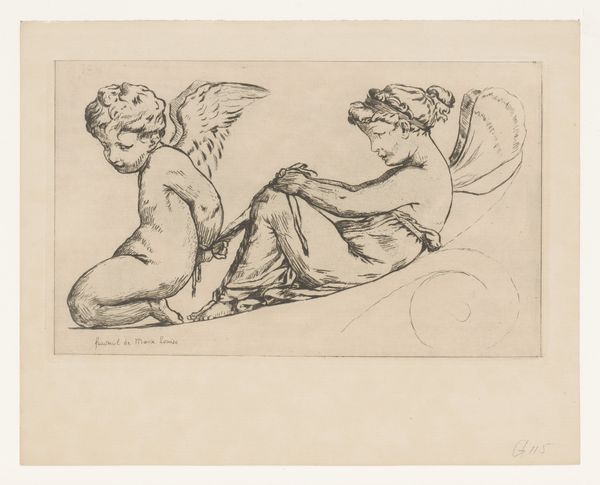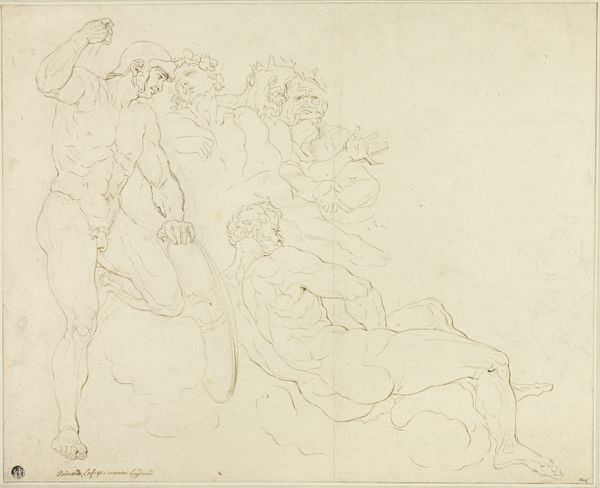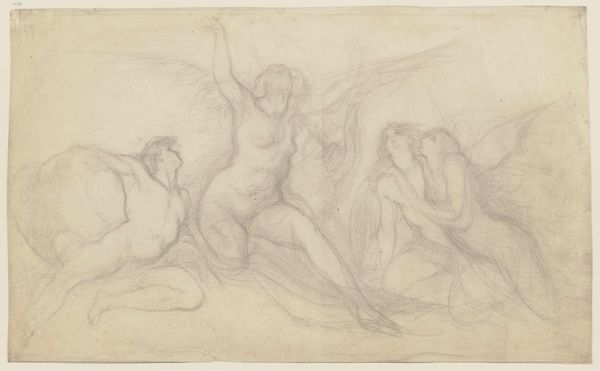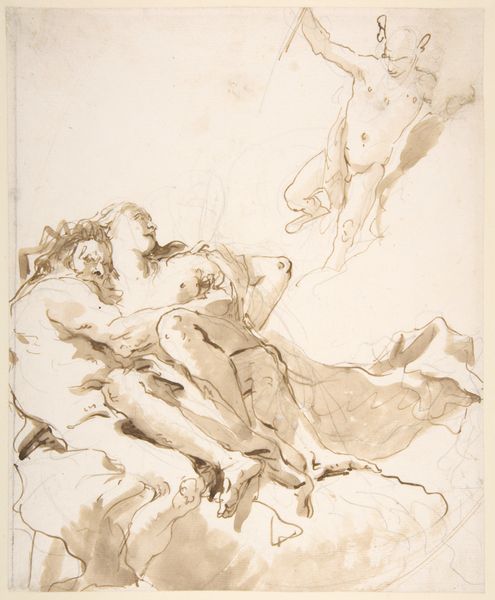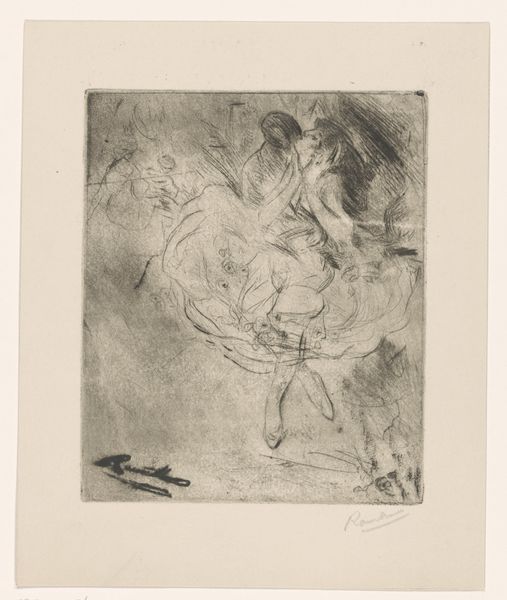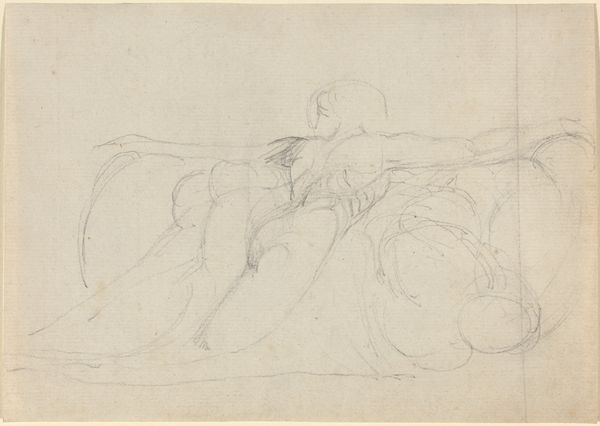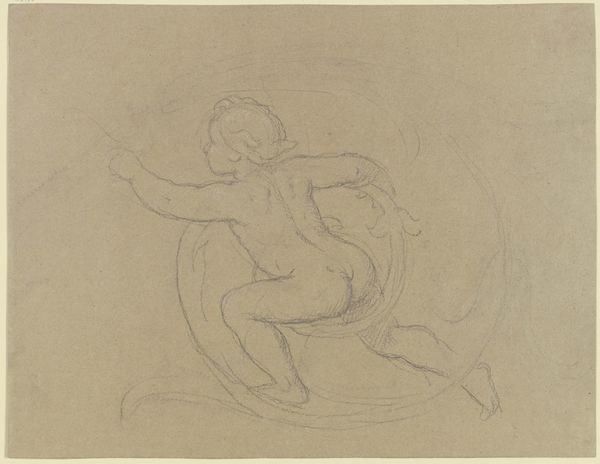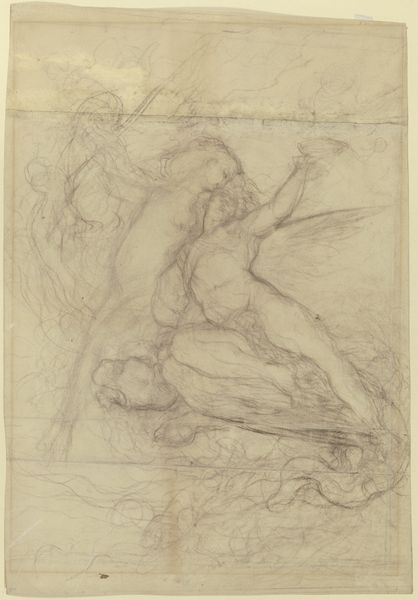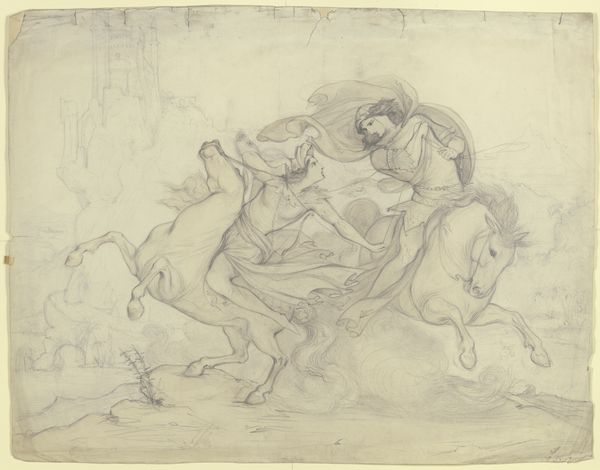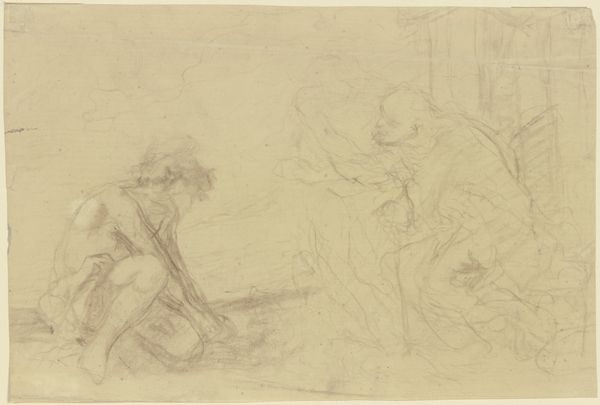
drawing, pencil
#
drawing
#
baroque
#
figuration
#
11_renaissance
#
pencil
#
genre-painting
#
history-painting
Dimensions: height 256 mm, width 348 mm
Copyright: Rijks Museum: Open Domain
Editor: So, here we have "Samson Fighting the Lion" by Peter Paul Rubens, created sometime between 1587 and 1640. It's a pencil drawing, and what strikes me immediately is the dynamic composition, all these swirling lines creating a sense of raw energy. What do you see when you look at it? Curator: Formally speaking, observe how Rubens has employed hatching and cross-hatching to sculpt the figures from the blank paper. This creates a powerful contrast between light and shadow that enlivens the entire scene. Notice also the use of *pentimenti,* or visible corrections, particularly around Samson's legs and the lion's mane. This allows us a glimpse into the artist’s process. What is your perspective? Editor: That’s fascinating! I hadn't considered how those corrections contribute to the sense of motion. It's like we’re seeing the artist grapple with the figures as much as Samson grapples with the lion. Does the fact that it's a drawing, and seemingly a study, change how we should interpret its message? Curator: Consider the composition independent of subject matter. The opposition of muscular forms and the dynamic tension implicit in the diverging diagonals give rise to an abstract representation of conflict. Would you agree with that sentiment? Editor: Absolutely. Focusing on those elements, it's as if the narrative is almost secondary to the formal exploration of shape and line. I learned a lot today. Curator: Indeed. By understanding the function of line and shading, we move closer to understanding the intentions of the artwork, irrespective of its narrative value.
Comments
No comments
Be the first to comment and join the conversation on the ultimate creative platform.
